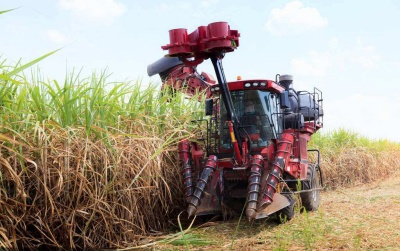Industrial joysticks are indispensable tools in the realm of modern machinery control, offering precision and ease of operation across a wide array of applications.

In the Realm of Material Handling Equipment
Forklifts and cranes are common material handling equipment in industrial settings. In a forklift, the industrial joystick serves as the nerve center for the operator to control the vehicle\\\\\\'s movements precisely. When the operator tilts the joystick forward or backward, it activates a series of electrical signals. Inside the joystick, there are sensors, often of the potentiometric or Hall - effect type.
Potentiometric sensors work based on the principle of variable resistance. As the joystick is moved, it changes the position of a wiper on a resistive element. This change in position alters the electrical resistance in the circuit. For example, when the joystick is in the neutral position, the resistance is at a certain baseline value. When pushed forward, the resistance decreases in one part of the circuit, while increasing in another. These changes in resistance are then detected by the control system of the forklift. The control system interprets these resistance changes as commands for the forklift\\\\\\'s hydraulic pumps. A forward tilt of the joystick might signal the hydraulic pump to extend the lift mast, allowing the forks to pick up a load.
Hall - effect sensors, on the other hand, operate using the Hall effect. When a magnetic field, which is typically associated with the movement of the joystick, passes through a Hall - effect sensor, it generates a voltage proportional to the strength of the magnetic field. The movement of the joystick changes the magnetic field\\\\\\'s orientation or strength relative to the sensor. This voltage output is then processed by the forklift\\\\\\'s control unit. In the case of a crane, the joystick allows for the control of multiple functions such as the hoisting of the load, the slewing of the crane arm, and the luffing of the boom. Each movement of the joystick in different directions and with varying degrees of displacement is translated into specific electrical signals that control the corresponding motors or hydraulic actuators of the crane.
In the Field of Mobile Construction Machinery
Bulldozers, excavators, and loaders are staple equipment in construction sites. In an excavator, the industrial joystick allows the operator to control the movement of the boom, stick, and bucket with great precision. The joystick\\\\\\'s movement is detected by sensors, which can be either mechanical - contact - based (such as in some older models) or non - contact sensors like optical or magnetic sensors in more advanced models.
Mechanical - contact - based sensors work through a system of switches or variable resistors that change their state or resistance as the joystick is moved. For instance, when the operator moves the joystick to lower the boom of the excavator, the mechanical movement closes a set of switches or changes the resistance in a circuit. These changes are then transmitted to the hydraulic control valves of the excavator. The hydraulic control valves adjust the flow of hydraulic fluid to the cylinders that operate the boom, causing it to lower. Optical sensors, on the other hand, use light - emitting diodes (LEDs) and photodetectors. The movement of the joystick blocks or allows light to fall on the photodetectors in different patterns, which are then translated into electrical signals. Magnetic sensors operate on a similar principle, detecting changes in magnetic fields caused by the movement of the joystick. These electrical signals are used to control the hydraulic systems of the construction machinery, enabling the operator to perform tasks such as digging, grading, and loading materials efficiently.
Shanghai Chengong Electrical Control Co.,Ltd has been dedicated to the research, development, and production of industrial control components, including industrial joysticks. The company adheres to strict quality control standards throughout the production process. From the selection of high - quality materials for the joystick\\\\\\'s mechanical parts, ensuring durability and resistance to wear and tear in harsh industrial environments, to the precise calibration of sensors to guarantee accurate signal transmission, every aspect is carefully attended to. Their products are designed with user - friendliness in mind, providing operators with a comfortable grip and intuitive control experience.